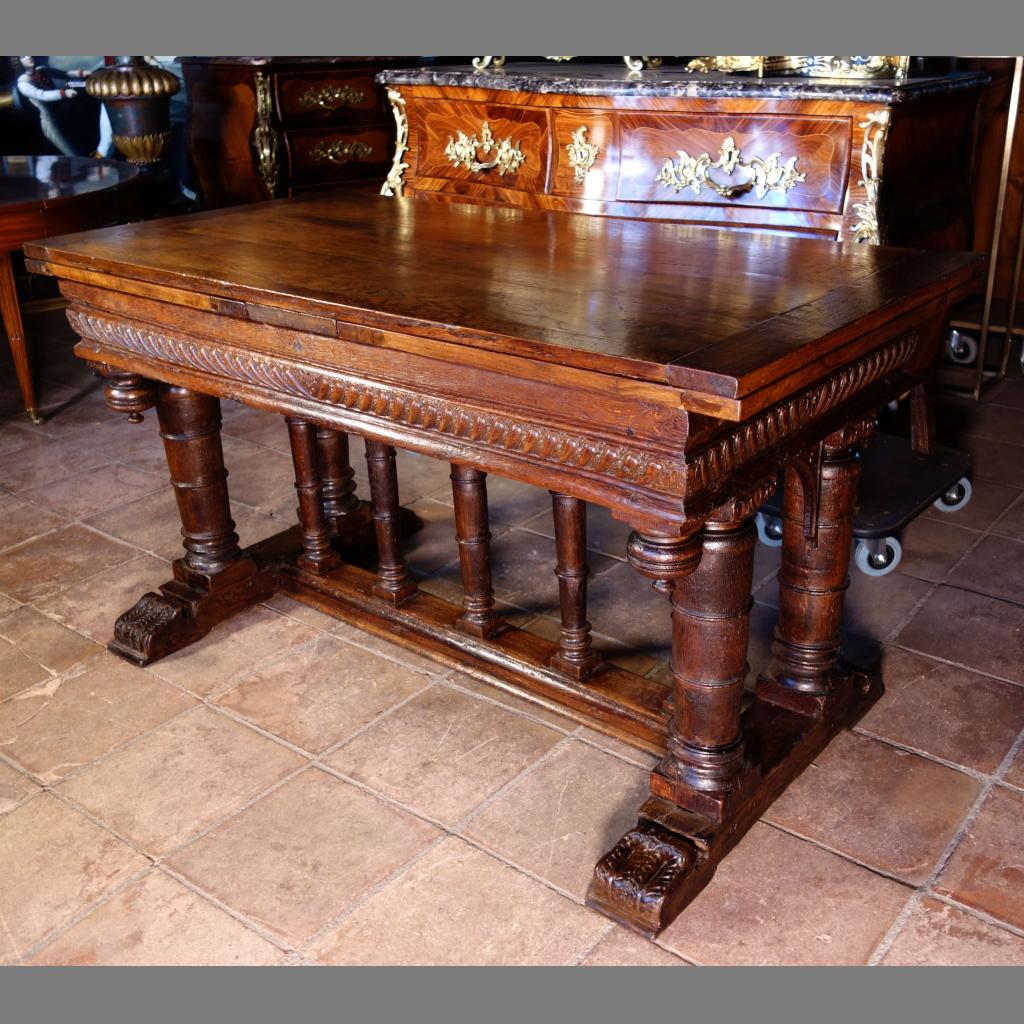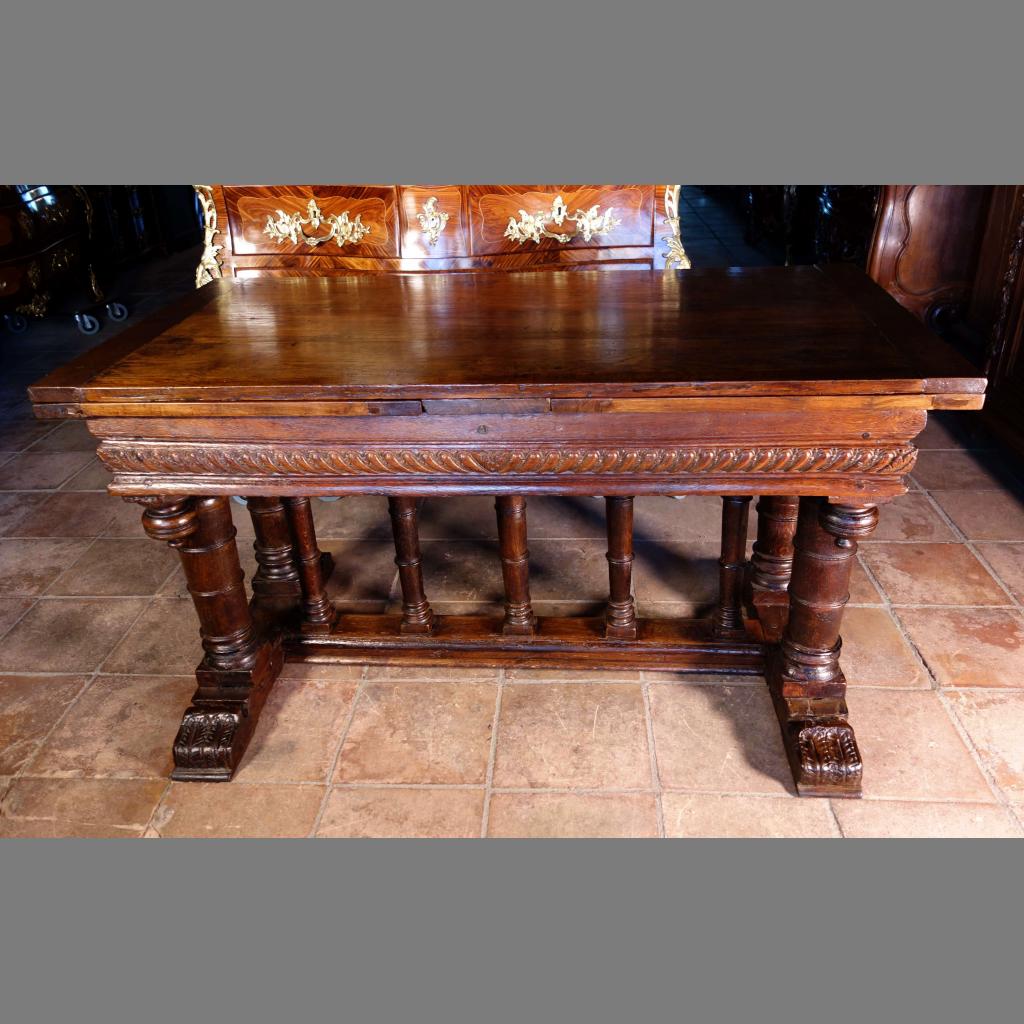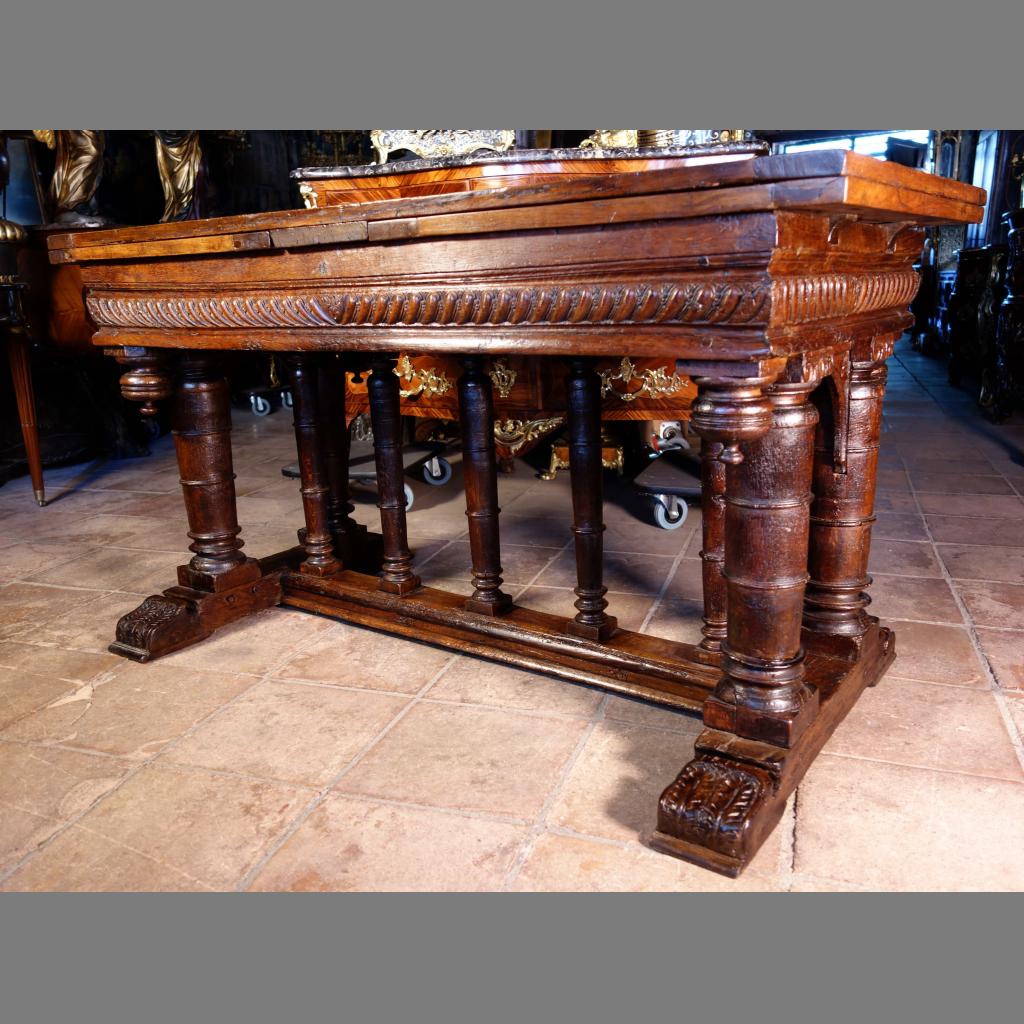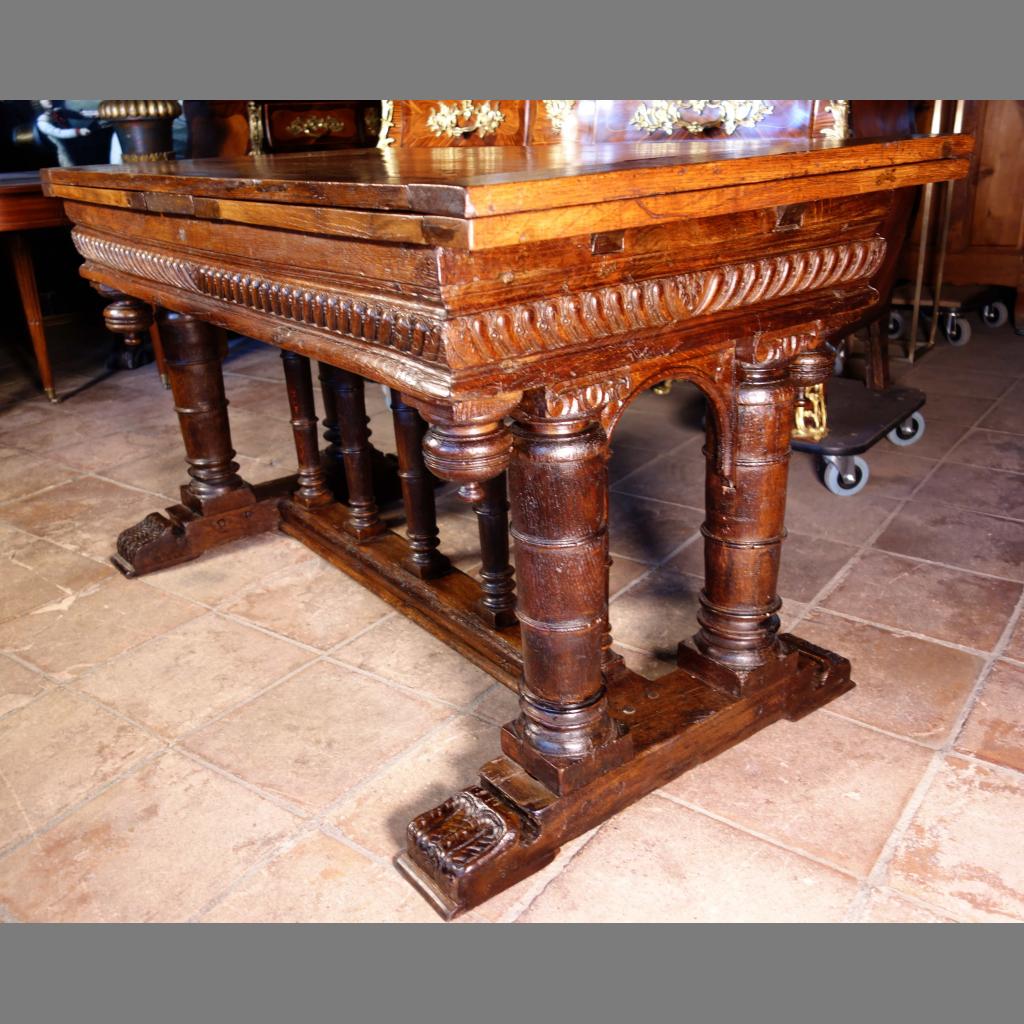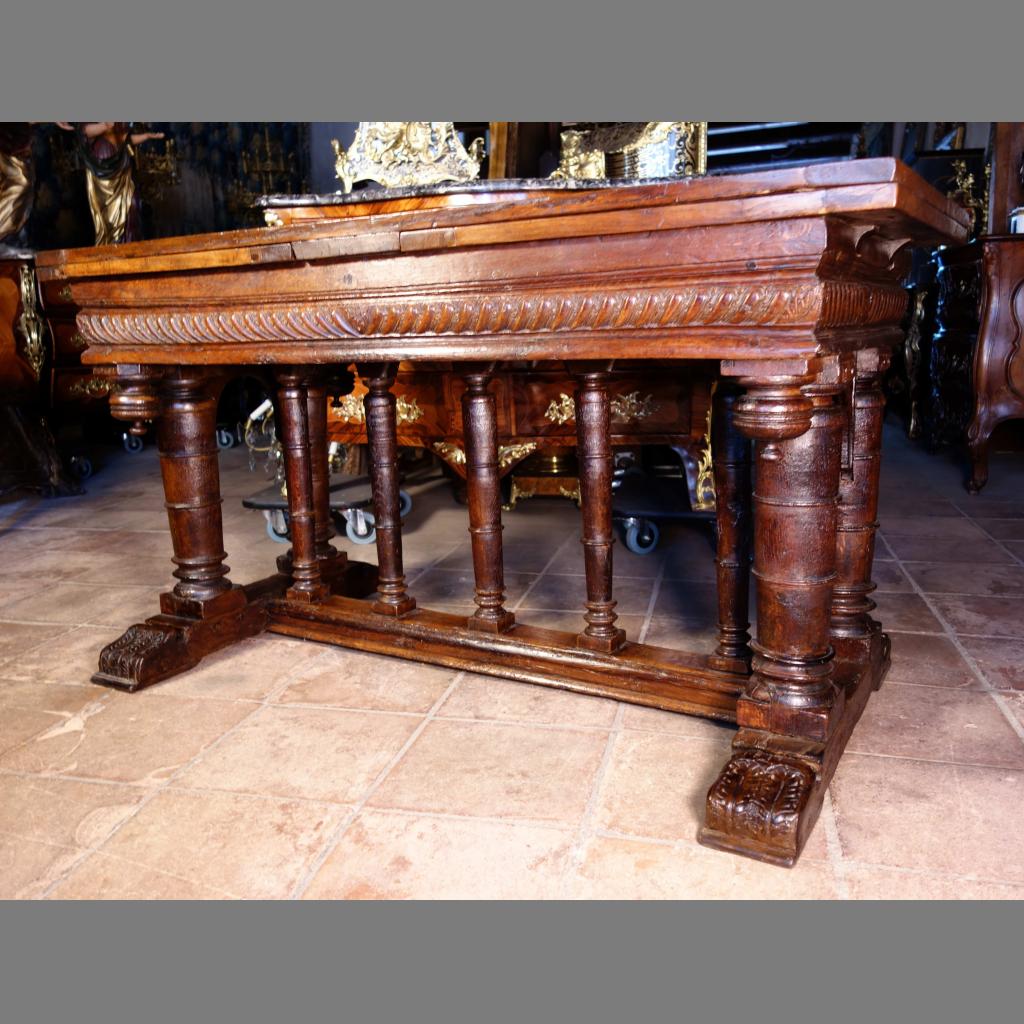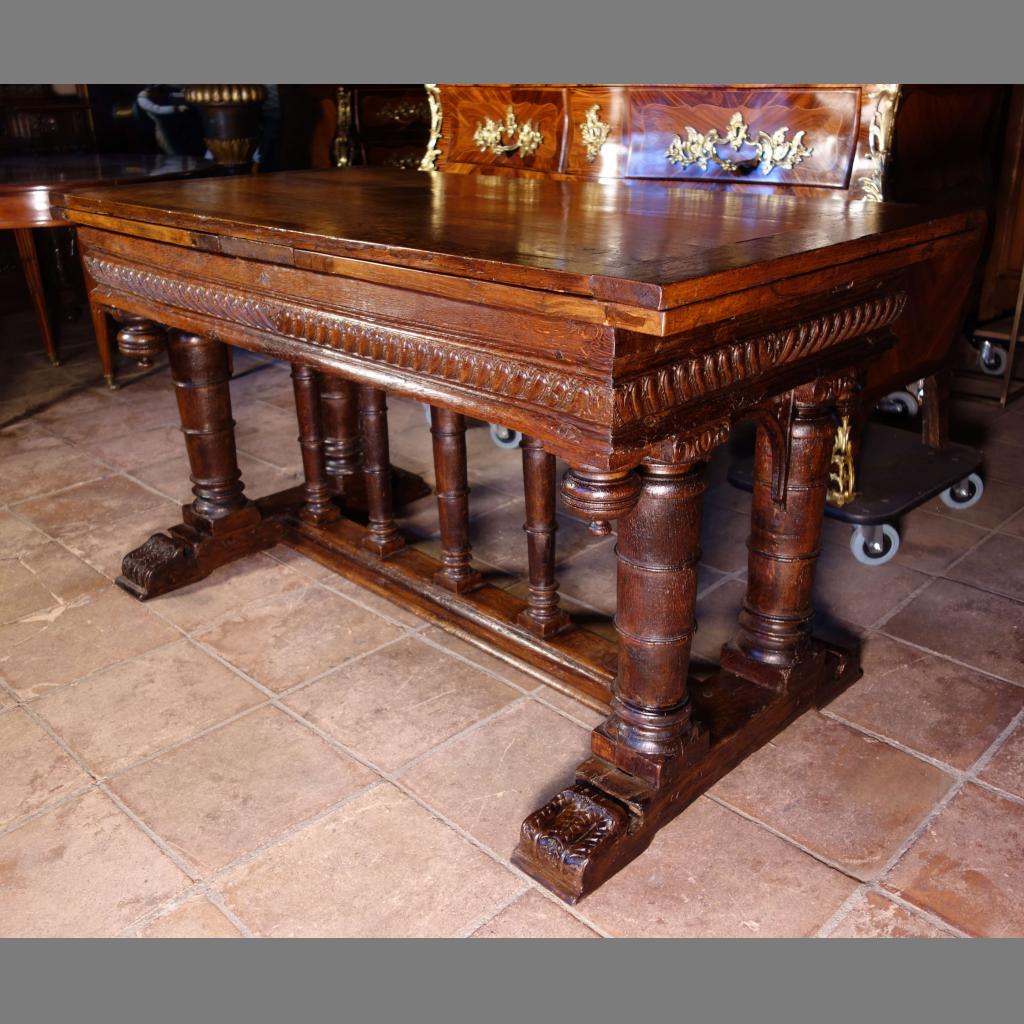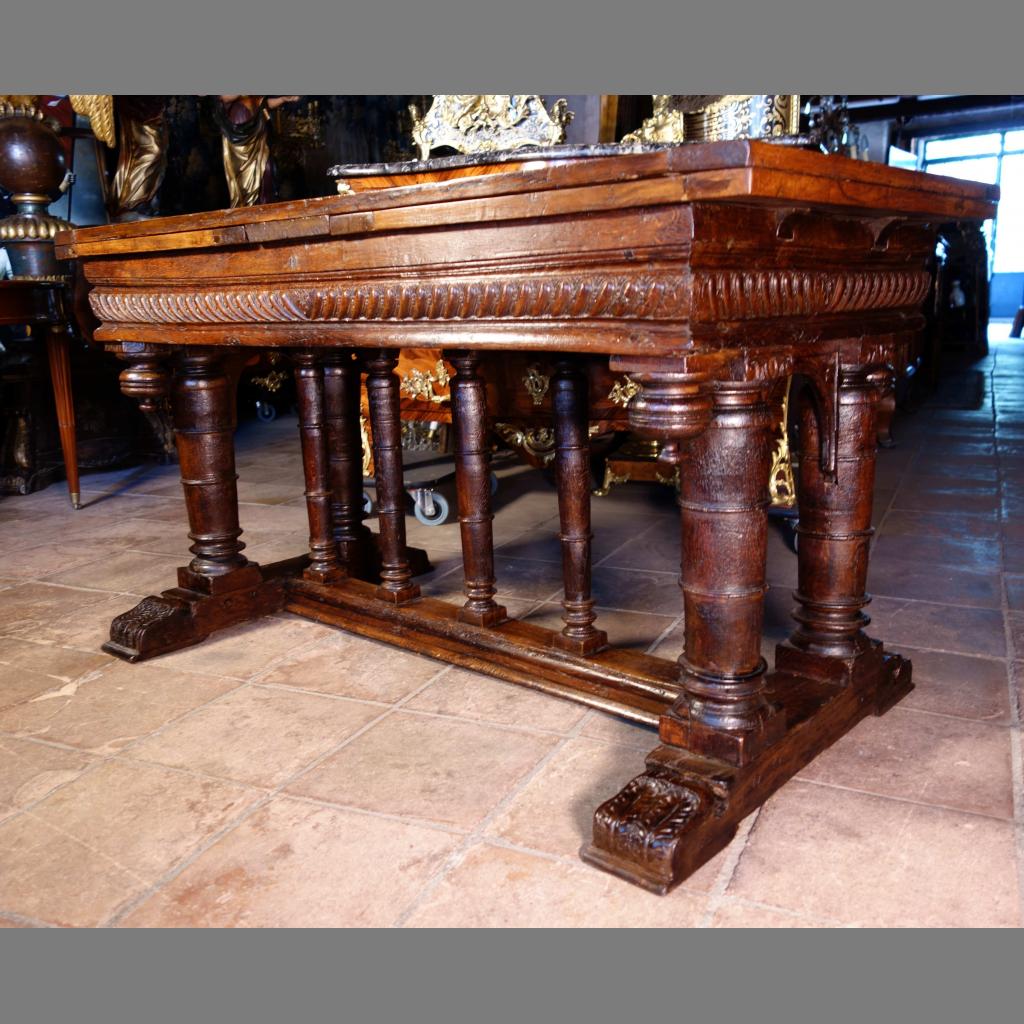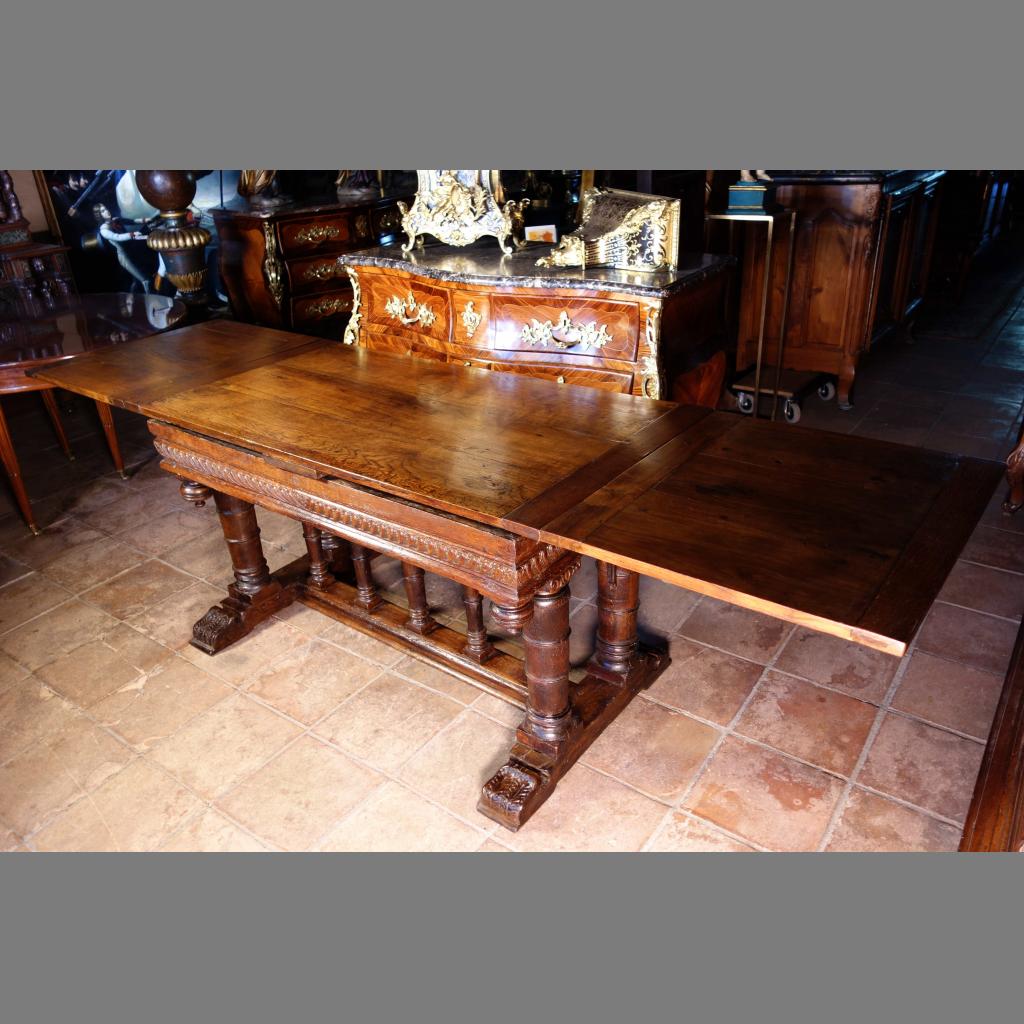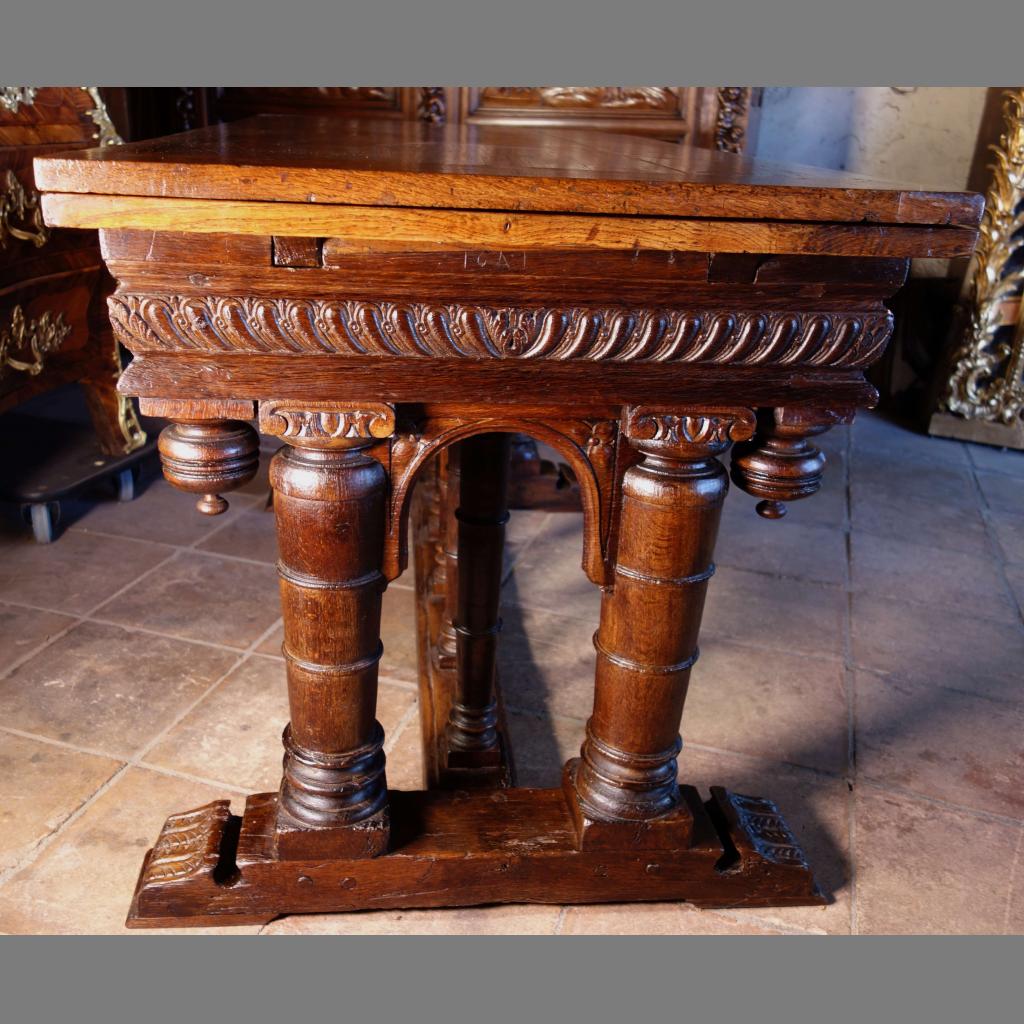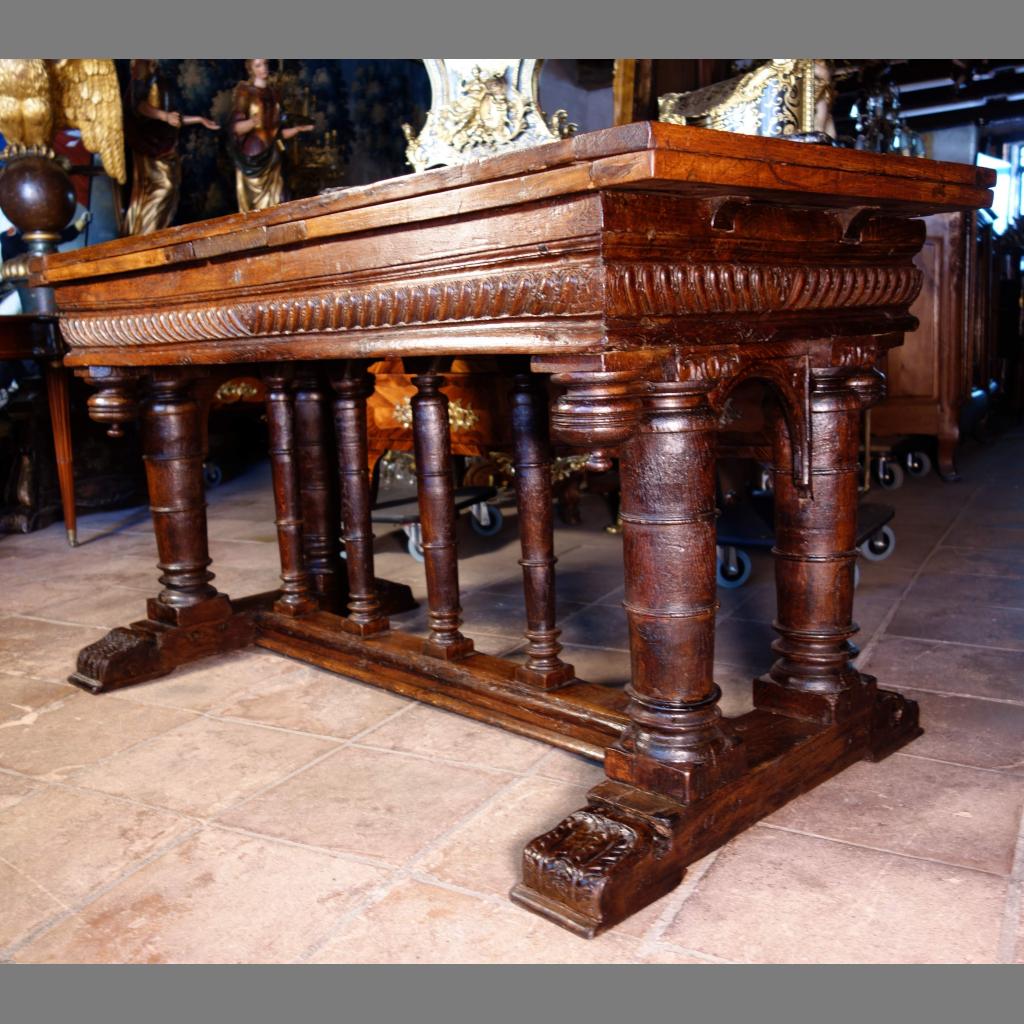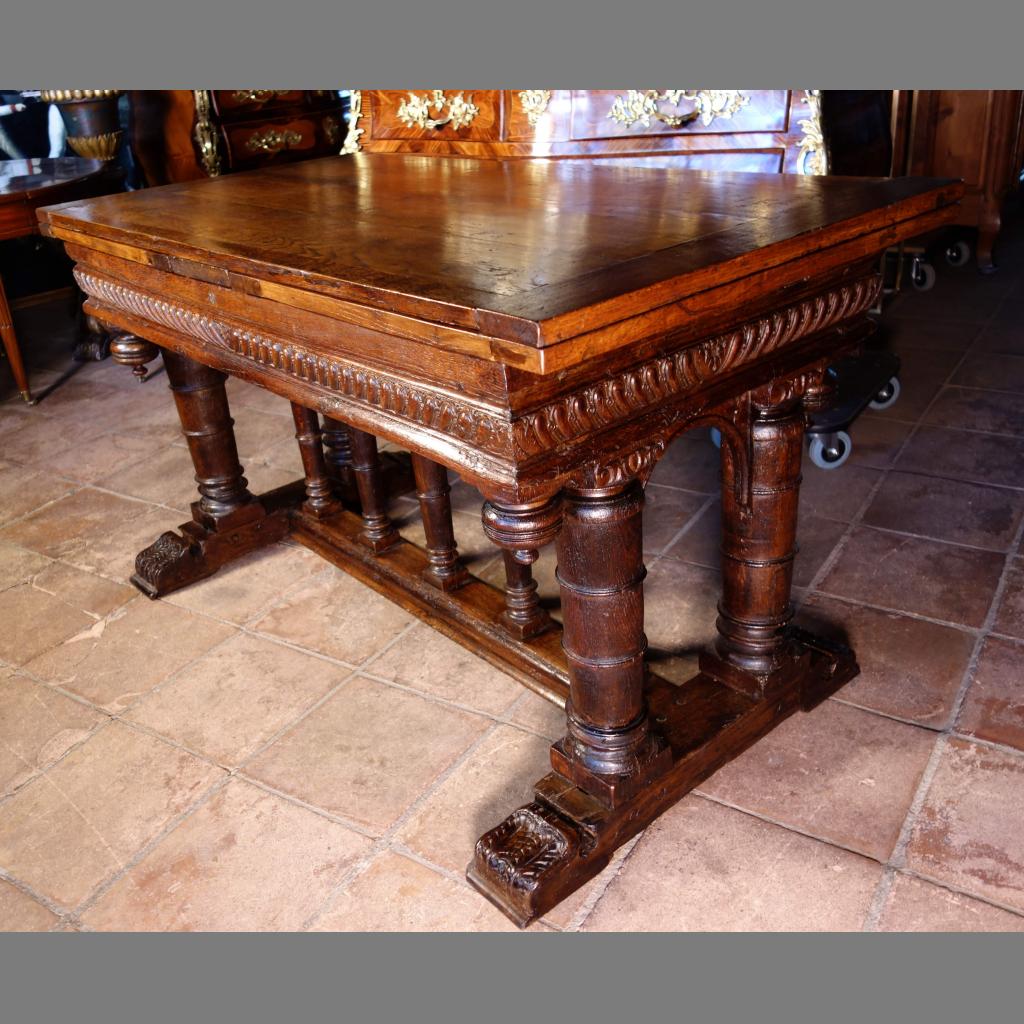Lire la suite...
“Portico” table from the second Renaissance, after Jacques Androuet du Cerceau
BuyRequest details22000 € (port +200€)
Tables,
Renaissance,
XVI
Italian table in moulded, sculpted and turned oak. The invention of this type of table being attributed to Jacques Androuet du Cerceau, our model is one of the so-called "portico tables" according to the classification of Jacques Thirion, a historian specializing in Renaissance furniture.
The mobile tray can be deployed by means of two extensions placed below. This opening and closing system makes it possible to appreciate the particularly elaborate base of this Second Renaissance table without constraint.
The wide belt molded with friezes of facing gadroons rests on a thick spacer made up of five solidly turned balusters. At each end, two thick columns with carved abacuses frame an arcade. On either side of these porticoes, molded spinning tops adorn this architectural composition. Four runners sculpted with quills support this luxury Renaissance object.
The French table of the Renaissance is inspired by the Italian table, itself appeared by a rediscovered interest in antiquity and the trapezophores of the marbles of this period. It has a preponderant importance in the residences of first-class personalities because it is at the center of the festivities. The luxurious models have a belt decorated with ovals or gadroons, the spacer is reinforced with balusters and arches at the ends, the runners are worked, cut, as is the case on the one we are exhibiting. This one has not been modified or transformed during its long life, it only presents a few maintenance restorations.
According to Jacques Thirion, "The table of the second Renaissance marks one of the summits of the art of furniture in France".
Period end of the 16th century – beginning of the 17th century. Second Renaissance.
Length: 142cm
Extended length: 264 cm
Height: 78cm
Depth: 72cm
